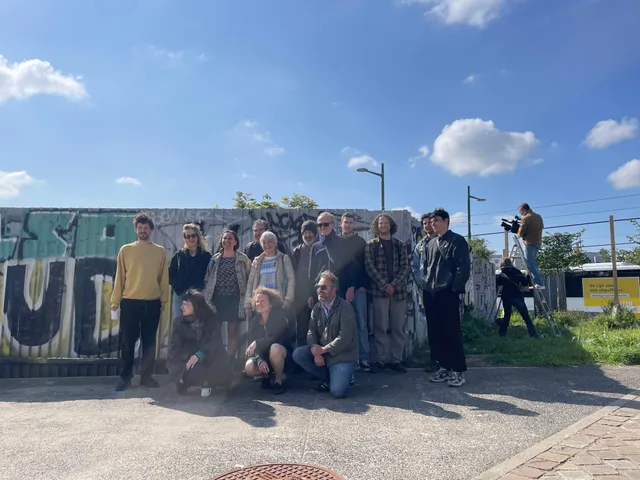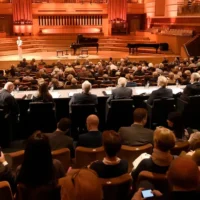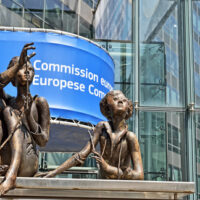Local residents of the Ninoofsepoort are not satisfied with the revised version of the Construction Plan (RPA) that has to reshape their neighborhood. Instead of extra residential towers and parking garages, they advocate an experience center around water. “This neighborhood has many needs, but this plan meets none of them.”
The Ninoofsepoort is wedged between the Channel and the Kleine Ring. In 2019, the first Development Plan for the district was put on the table. The Regional Development Commission (GOC), the body responsible for evaluating Brussels’ strategic plans, then issued a negative opinion because, according to them, the development was not tailored to the neighbourhood. The public inquiry into the second design is currently underway, but local residents say there has been little progress.
‘Need For Green Spaces’
On Thursday morning they took us on a tour of the neighborhood to show what the impact of the revised plans will be on the site. “Residents need positive, collective facilities, green spaces and quality social housing. All things that are missing in the revised version of this plan,” says Benjamin Delori of BRAL, an urban movement that strives for a sustainable Brussels.
“The plan is to build a project with three residential towers of at least fifteen floors on this vacant triangle, while the area is already completely saturated.” traffic situations.
“An RPA could be a positive instrument if it is drawn up together with citizens and neighborhood associations,” says Delori. the real needs.”
“If you don’t live or live in this neighborhood, you can’t decide what this neighborhood needs,” says director and local resident Fien Troch. “I find it heartbreaking to see that we were first given a green space, and that it is now being nullified by the financial motivation behind it. This might bring in money, but it doesn’t bring any benefit to the neighborhood. On the contrary.”
According to the residents, the plan will mainly ensure that the plots will seriously increase in value, because much larger building volumes will be allowed. “This is just a way to attract construction promoters,” says Delori. “But isn’t it the government’s job to regulate real estate companies instead of encouraging them?”
Park
The green space that Troch is talking about is the park at the Ninoofsepoort. In sunny weather it is always over the heads. “But behind the playground in the park, people now want to create a lane again so that cars can pass again,” says Mohamed Benzaouia of Inter-Environnement Bruxelles. We desperately need all the green space there is.”
Instead of extra buildings and concrete, according to those present, there is a particular need for activities that bring the neighborhood together. The PorteNinovePoort district committee, for example, is asking to create an experience center around water at the Ninoofsepoort – preferably in collaboration with Vivaqua, Brussels Environment and the sewerage museum.
The area borders the underground transit channels of the Zenne and the Canal, but the vacant lot is also said to be a water-rich zone. “Water will only become more important in our city in the coming years. Such an experience center can inform Brussels residents, you can turn it into a museum, organize school visits,…” The residents also suspect that the place is an important place for biodiversity in the city, and regret that no research has yet been carried out into this. occurred.
The public inquiry will run until May 30. Neighborhood organizations PorteNinovePoort, ADOPT (place de Ninove), CRU Anderlecht, La Rue, Buurthuis Bonnevie, ARAU, BRAL and Inter-Environnement Bruxelles are calling for objections to be lodged against the plans.
The cabinet of Prime Minister Rudi Vervoort does not yet want to comment on the draft RPA. It indicates that the public inquiry is still ongoing. “When everyone has had time to express their opinion, we will examine everything in detail.”
This article is originally published on bruzz.be



